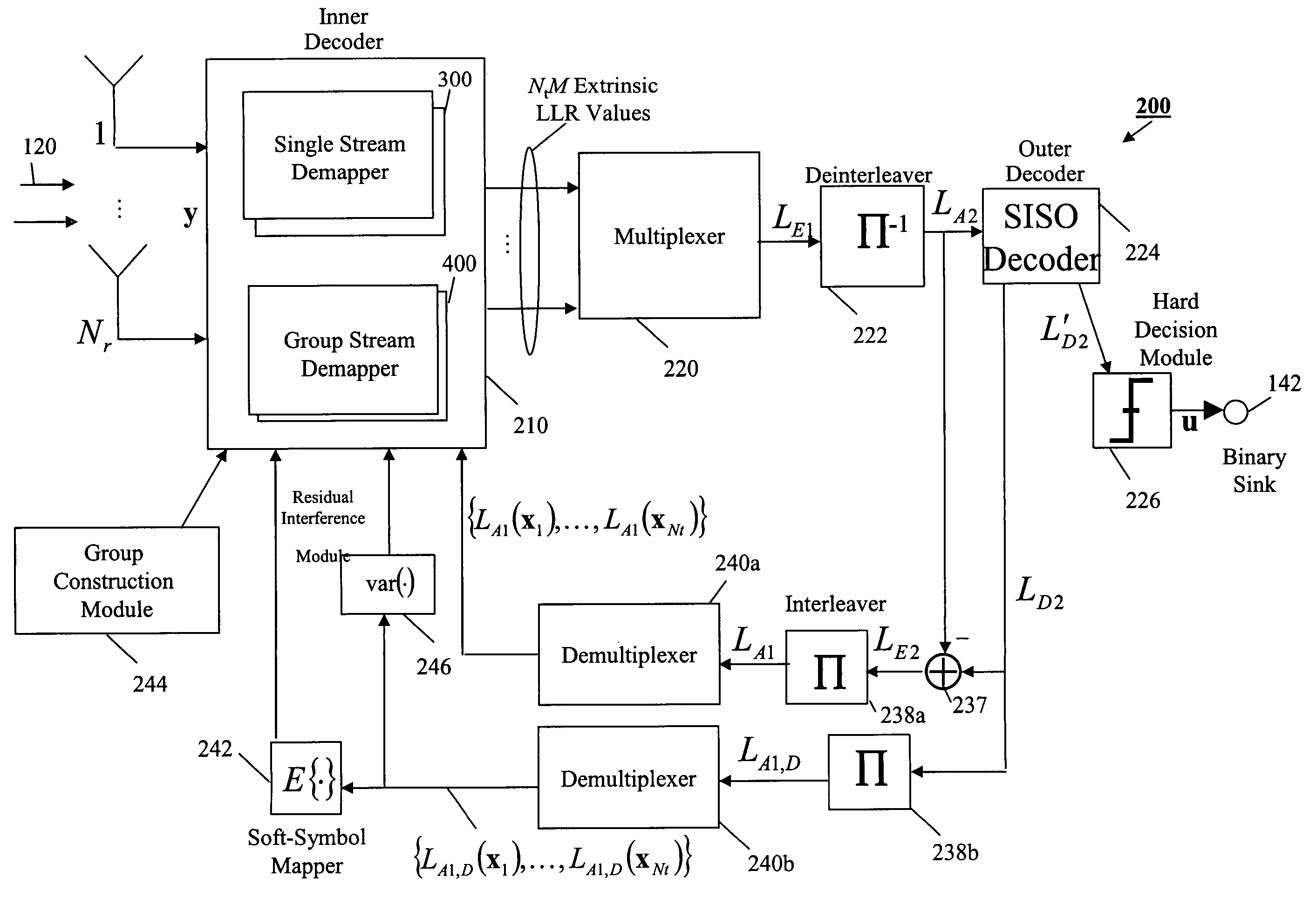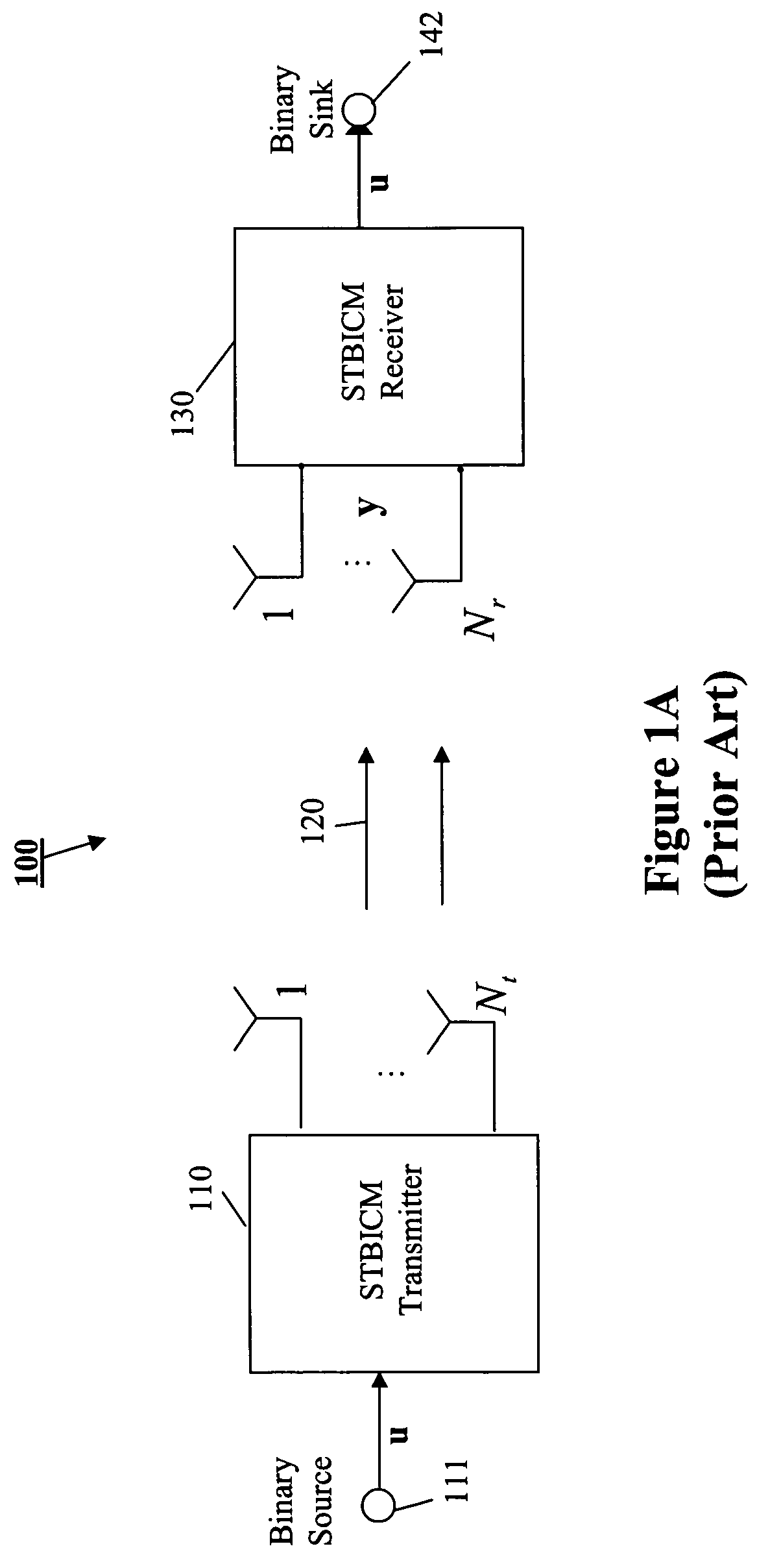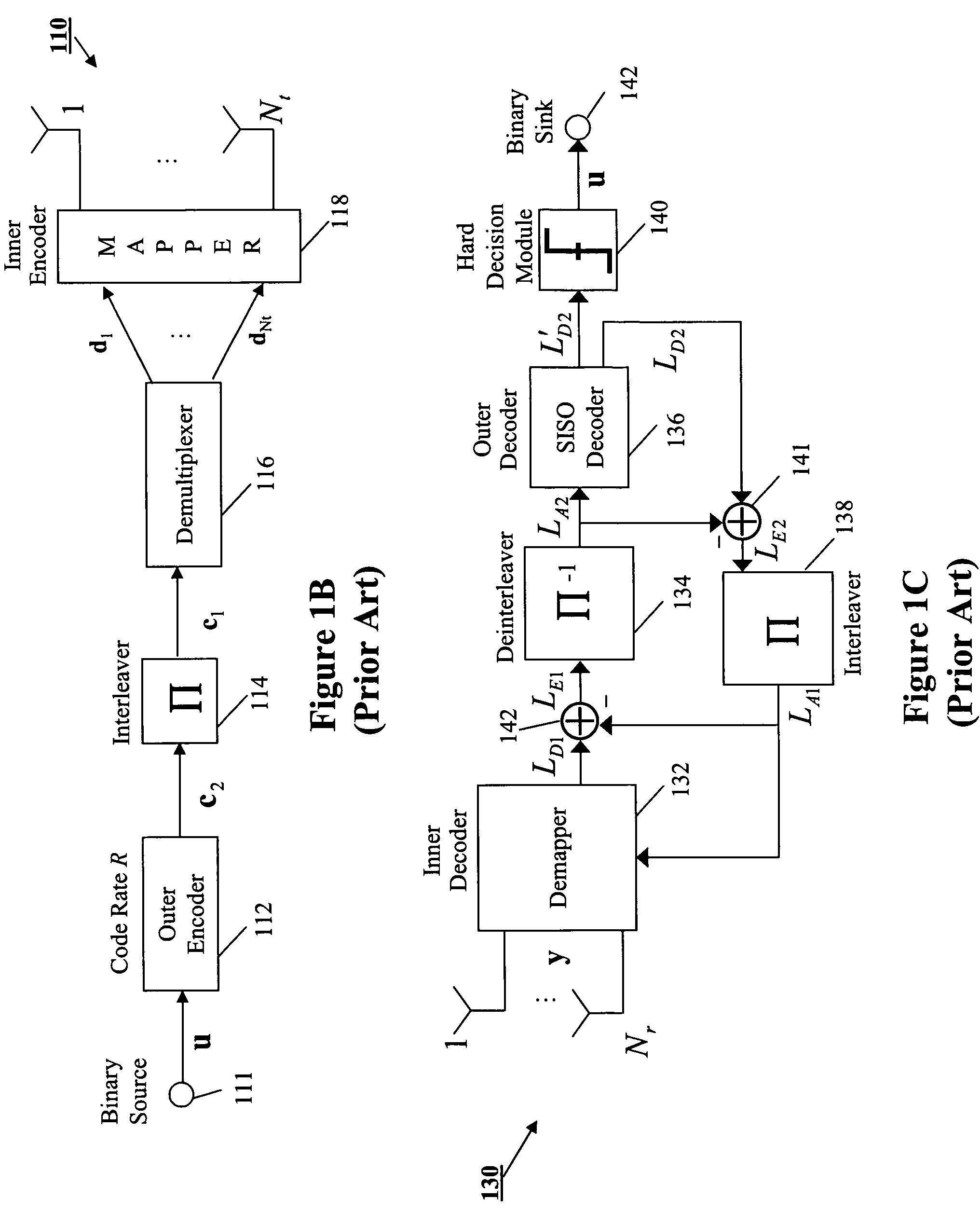Iterative STBICM MIMO receiver using group-wise demapping
a technology of group-wise demapping and mimo receiver, which is applied in the field of iterative multi-input multi-output (mimo) receiver, can solve the problems of demapping 132, prohibitive to practical implementation of high spectral efficiency mimo systems, and prohibitive to practical implementation using current silicon technology, so as to maximize performance, enhance the desired stream, and minimize the contribution of any residual interference
- Summary
- Abstract
- Description
- Claims
- Application Information
AI Technical Summary
Benefits of technology
Problems solved by technology
Method used
Image
Examples
Embodiment Construction
[0040]Referring to FIG. 2, there is illustrated a functional architecture of a receiver 200 according to an embodiment of the invention. Receiver 200 is STBICM MIMO receiver with Nr receive elements (Nr≧1) and uses iterative detection to recover an information bit sequence u transmitted over a wireless channel 120 by an STBICM transmitter, such as transmitter 110, having Nt transmit elements. The number of receive elements Nr may or may not equal the number transmit elements Nt. For ease of description, the invention will be described under the assumption that during each channel use, there are Ns=Nt transmitted symbol streams where each stream is transmitted by a unique transmit element Nt. Accordingly, the following discussion and disclosed equations are based on this assumption. Nonetheless, one skilled in the art will recognize that the invention is not limited to this simplification.
[0041]For example, each transmit element may transmit some linear combination of multiple stream...
PUM
 Login to View More
Login to View More Abstract
Description
Claims
Application Information
 Login to View More
Login to View More - R&D
- Intellectual Property
- Life Sciences
- Materials
- Tech Scout
- Unparalleled Data Quality
- Higher Quality Content
- 60% Fewer Hallucinations
Browse by: Latest US Patents, China's latest patents, Technical Efficacy Thesaurus, Application Domain, Technology Topic, Popular Technical Reports.
© 2025 PatSnap. All rights reserved.Legal|Privacy policy|Modern Slavery Act Transparency Statement|Sitemap|About US| Contact US: help@patsnap.com



